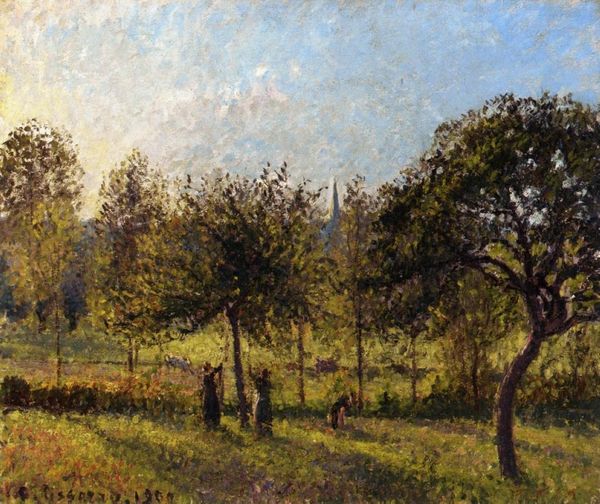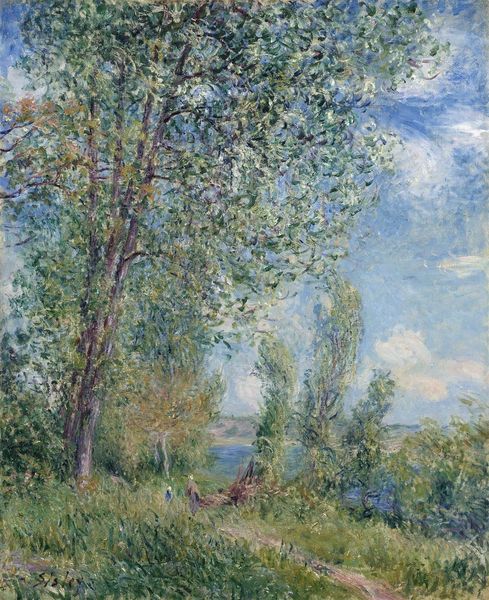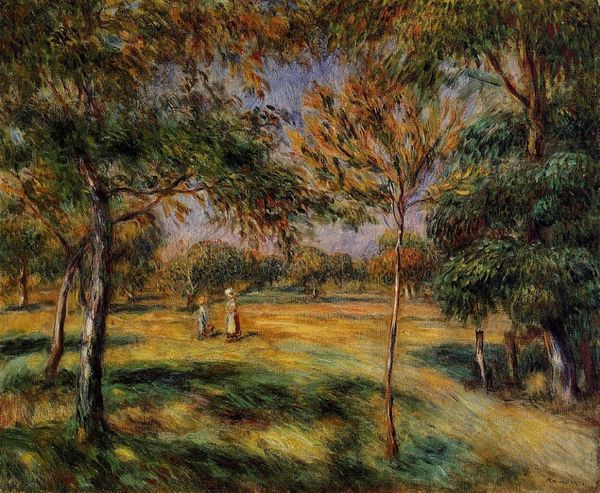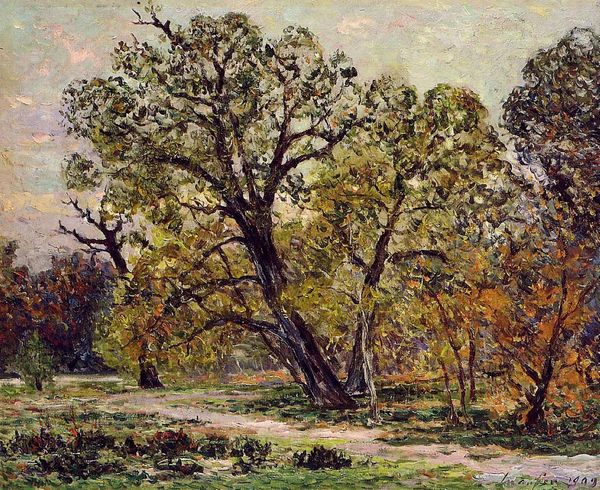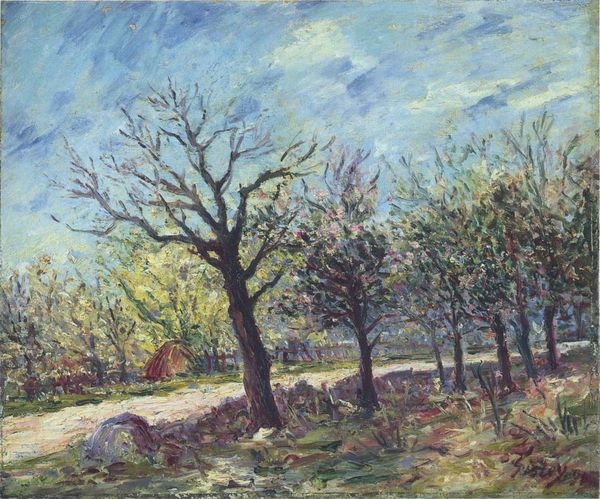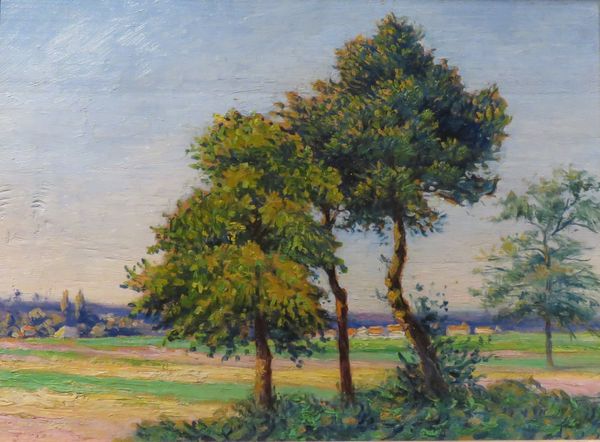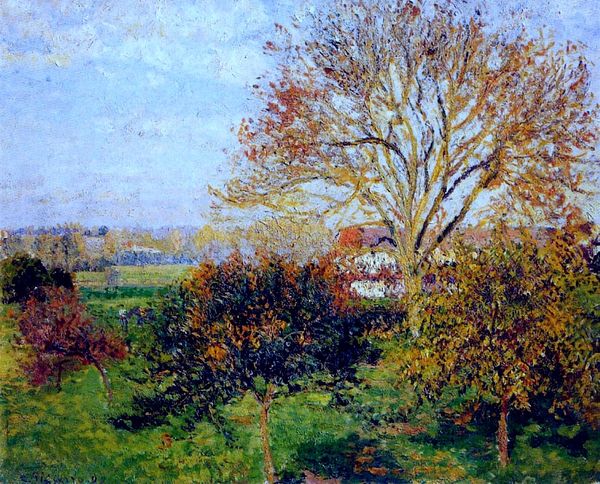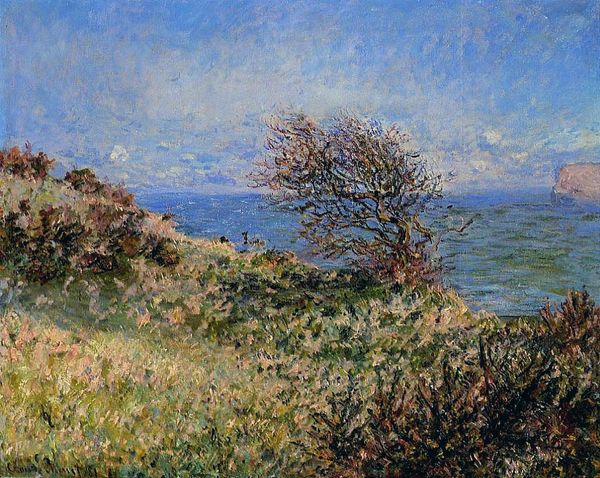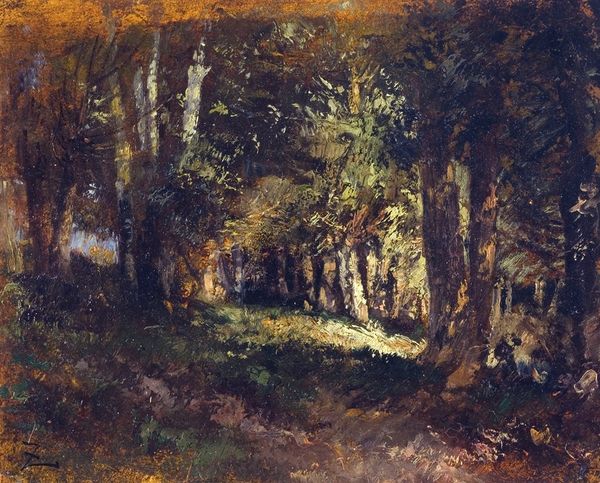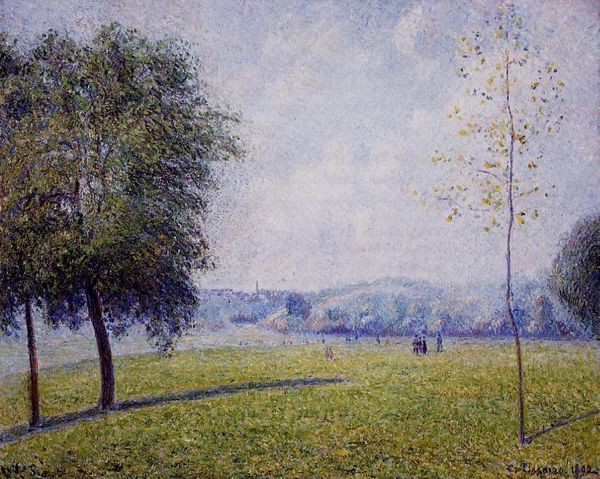
Copyright: Public domain
Curator: Looking at this oil painting, “Beg-Miel, Bay of Cocarneau” created by Maxime Maufra in 1900, I immediately think about the interplay between nature and perception within impressionistic landscapes. Editor: My first thought is the contrast of light and shadow. It feels very secluded, even secretive. Like a portal into another world, maybe a memory? Curator: Exactly, it pulls you in, doesn't it? Considering Maufra’s influences—artists like Monet and Pissarro—the scene becomes a study of how light shapes our understanding of space. He was deeply involved with Breton cultural identity, reflecting how landscapes signify belonging and collective memory, offering an important contribution to the region's visual representation and its connection to evolving ideas of French national identity. Editor: But even without knowing the cultural context, you feel the stillness. There's no visible human presence. Just this almost theatrical arrangement of trees framing the view. The path leading towards the open space evokes ideas about individual journeys, possibilities that open up before us in nature, right? Is that connected with a sense of isolation though? Curator: Certainly, this deliberate focus offers a potent statement about the relationship between humans and the natural world—highlighting the restorative and empowering facets that diverge from traditional narratives prioritizing human presence. Consider, too, the gendered dimensions—often, female figures are positioned within similar natural backdrops, implying passivity. This absence grants a certain agency back to nature itself. Editor: That’s a striking thought! It reframes my sense of its seclusion. But do you think Maufra considered this a commentary on the absence of the human? He's very much engaging with a contemporary impressionistic style here. Curator: I’d argue his aesthetic choices were always intrinsically connected to the broader social, political and historical climate, subtly embedding nuanced critiques. Editor: Whether intentional or not, it certainly evokes layered interpretations. The composition does suggest possibilities, freedoms found within natural boundaries. It's quite beautiful to see these concepts visualized in paint and canvas from over a century ago! Curator: It just proves the ongoing impact and enduring resonance when art intertwines with cultural narratives, giving voices and images to pivotal stories!
Comments
No comments
Be the first to comment and join the conversation on the ultimate creative platform.


